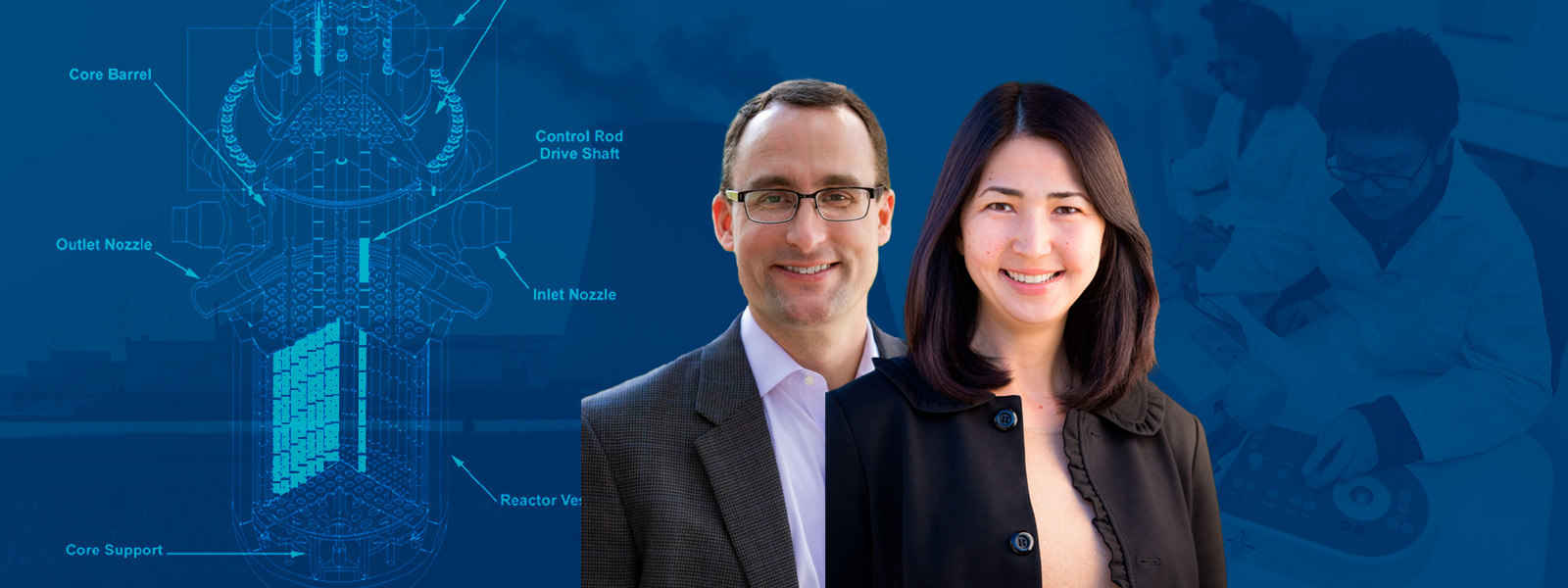Engineers from UF’s Department of Materials Science & Engineering (MSE) and the Department of Mechanical and Aerospace Engineering (MAE) are collaborating on research investigating neutron irradiation-induced embrittlement in nuclear reactor pressure vessels.
Douglas Spearot, Ph.D., professor of MAE and principal investigator, and Assel Aitkaliyeva, Ph.D., associate professor of MSE, are part of the $800,000 study. Along with scientists from the University of Wisconsin and Los Alamos and Idaho National Laboratories, they are working to predict the operating lifespan of nuclear reactors more accurately.
The materials that make up a nuclear reactor are exposed to some of the harshest environments on Earth. The combination of radiation, high temperatures and stress creates an environment that can harden and embrittle pressure vessel steels, potentially weakening the structure. The U.S. has the largest number of operating reactors in the world, which provide over half of the country’s clean energy. With the average age of our nuclear plants approaching four decades of operation, wear and tear on the major components inevitably comes into play.
“It’s one of the major concerns for extending the service life of the existing reactor fleet. Unfortunately, we do not fully grasp the mechanisms responsible for hardening and embrittlement,” Dr. Aitkaliyeva said. “We don’t have a lot of experimental data for materials being irradiated to high fluences, which accurately represent conditions a reactor pressure vessel experiences during its lifetime of use.”
Dr. Aitkaliyeva said that the combination of talent and the state-of-the-art tools not available at other institutions constitute a distinct scientific advantage for their group’s research.
“Our project is unique because it allows us to approach the problem using both experimental and modeling data, where each will provide impactful results,” Dr. Aitkaliyeva said. “Experimentally, we deal with highly radioactive specimens and perform microstructural characterization of material irradiated to high fluences. This data has been a knowledge bottleneck in the past because we simply did not have the information. Fortunately, with our Nuclear Fuels and Materials Characterization facility and direct connections to national labs, we are well-positioned to tackle this.”
The modeling team enables the group to work at two different length scales, allowing them to establish a fundamental understanding of the mechanisms that drive the problem and couple it with their experimental efforts.
“At the atomistic length scale, our partner at the University of Wisconsin will conduct simulations to understand how Mn-Ni rich precipitates (MNPs) form in the neighborhood of dislocations in steel,” Dr. Spearot said. “This information will be important as input to simulations at the mesoscale where my group, in collaboration with Los Alamos National Laboratory, will be conducting discrete dislocation dynamics simulations to predict yield strength in the presence of MNPs. Collectively, our goal is to understand and predict the role of MNP distribution on steel hardening and embrittlement.”
As nuclear power plants age, reactor vessels are not the only elements falling under analysis. In 2010, the Department of Energy established the Light Water Reactor Sustainability (LWRS) program to help preserve the safety of and extend the operation of these facilities far beyond the 40 years they were expected to last. Under initiatives such as these, virtually every component, from cabling to concrete, is regularly monitored and inspected for signs of integrity loss. As a result, multiple nuclear plants around the country are now licensed to operate for up to 80 years.
Dr. Aitkaliyeva and the team’s research will help further enhance the safety and longevity of nuclear plants, thus helping safeguard a significant part of our country’s clean energy future.

